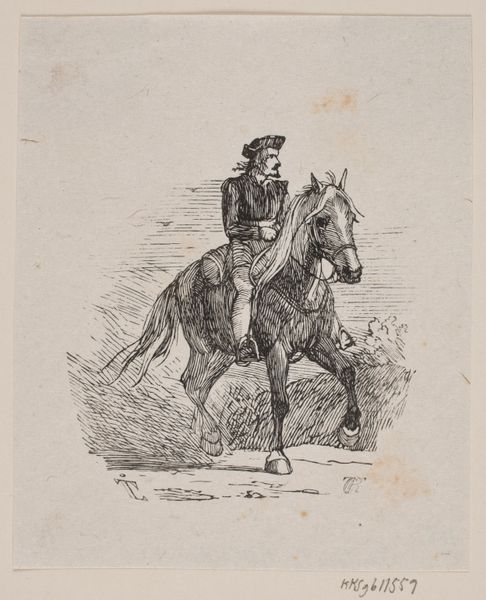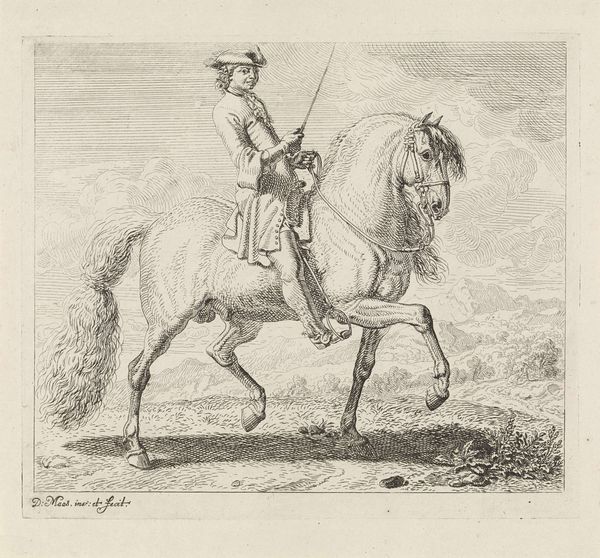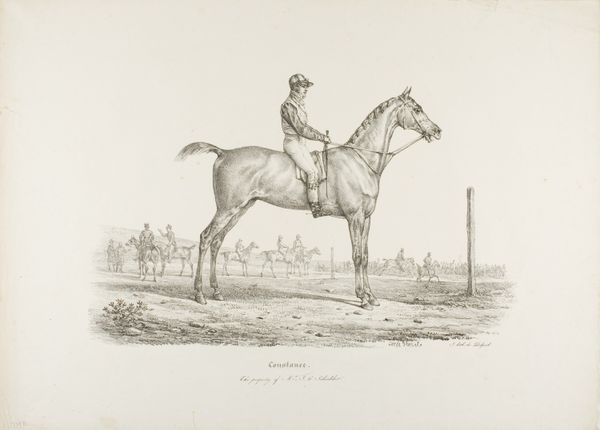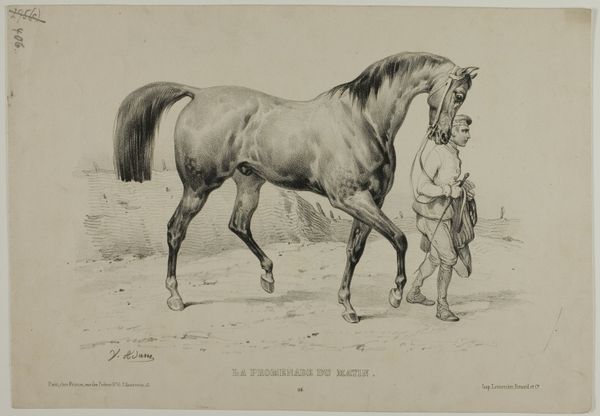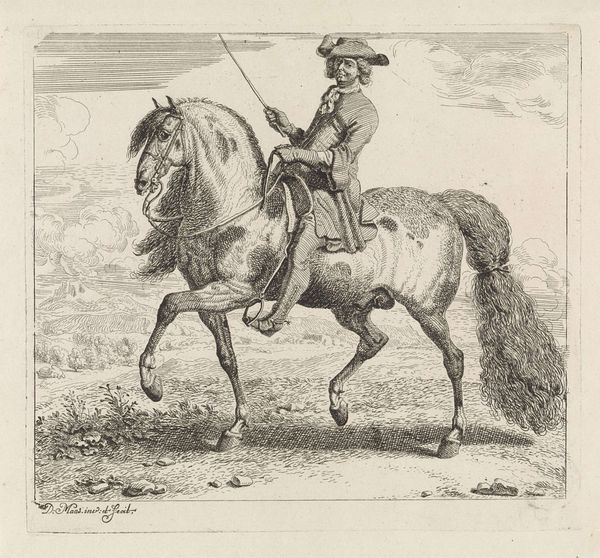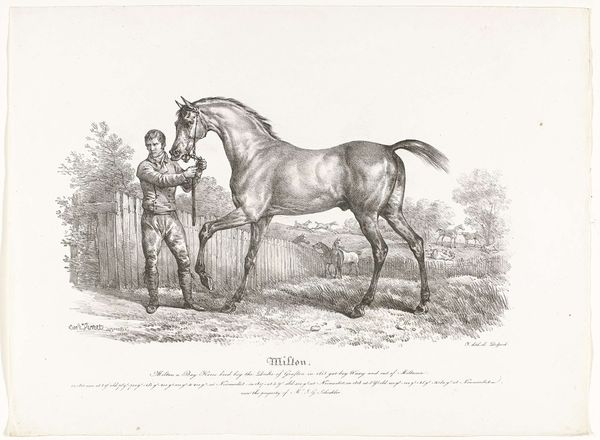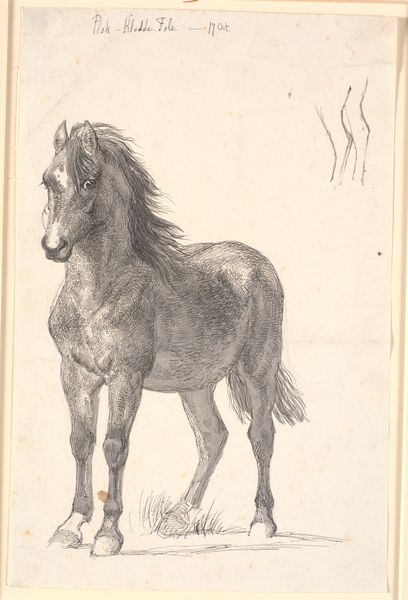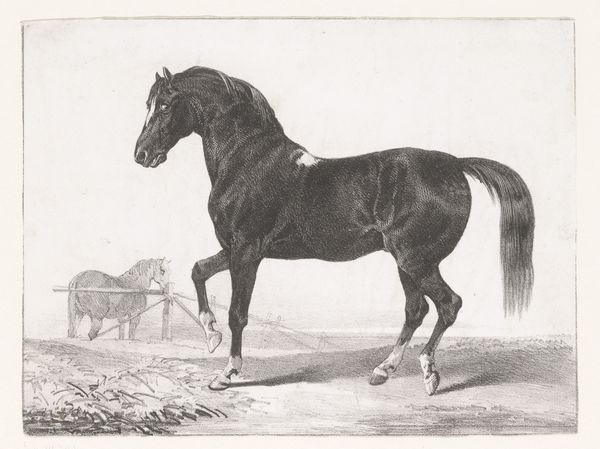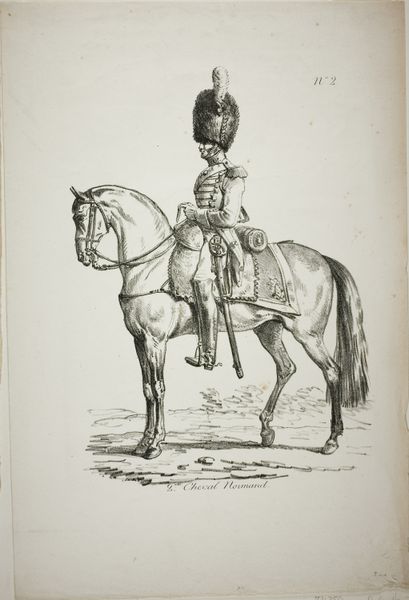
Royal Guard, Norman Cavalier, not in Full Dress, and Horse, No. 3 c. 1818
0:00
0:00
drawing, lithograph, print, paper
#
portrait
#
drawing
#
narrative-art
#
lithograph
# print
#
paper
#
pencil drawing
Dimensions: 302 × 226 mm (image); 386 × 268 mm (sheet)
Copyright: Public Domain
Editor: Here we have Carle Vernet’s "Royal Guard, Norman Cavalier, not in Full Dress, and Horse, No. 3," made around 1818. It’s a lithograph on paper. What strikes me is how casual it feels, despite the military title. What do you make of it? Curator: It's a study in contrasts, isn't it? You've got the imposing figure of the horse, almost overflowing with latent energy, rendered with these incredibly delicate lines – and then there's the handler, almost nonchalant. He's not "in full dress," as the title reminds us, but there’s still a palpable tension between restraint and freedom in the air. The horse could bolt any second, couldn't he? Editor: Absolutely! I hadn't thought about the tension that way. Why do you think Vernet chose to depict him this way? Was he making a comment about power or control? Curator: Possibly! I always think of the era Vernet was working in—post-Revolutionary France—when I look at this work. Napoleon had fallen, and there was this desire to recapture a sense of regalness, even a romanticized version of the past. Vernet almost pokes fun at that longing though, showing us a 'royal guard' so informally, so casually. He captures the beauty, certainly, the grace and power of both horse and rider... But there's a hint of… is it weariness? Disillusionment, perhaps? Editor: Wow, that completely changes how I see the drawing. I was focusing on the composition, the simplicity of the lines… but that historical context adds so much depth. Curator: That’s often how it is, isn’t it? Art becomes so much more interesting once you allow yourself to consider it a little beyond face value. This piece to me isn’t just about the lines that give it form. Instead, this snapshot, that might’ve even looked unassuming initially, allows us to see both an artist grappling with the nostalgia and perhaps disillusionment in early 19th century France. It gives life to it, beyond its visual aesthetics. Editor: Definitely given me food for thought, and the chance to go delve a little into this myself.
Comments
No comments
Be the first to comment and join the conversation on the ultimate creative platform.



